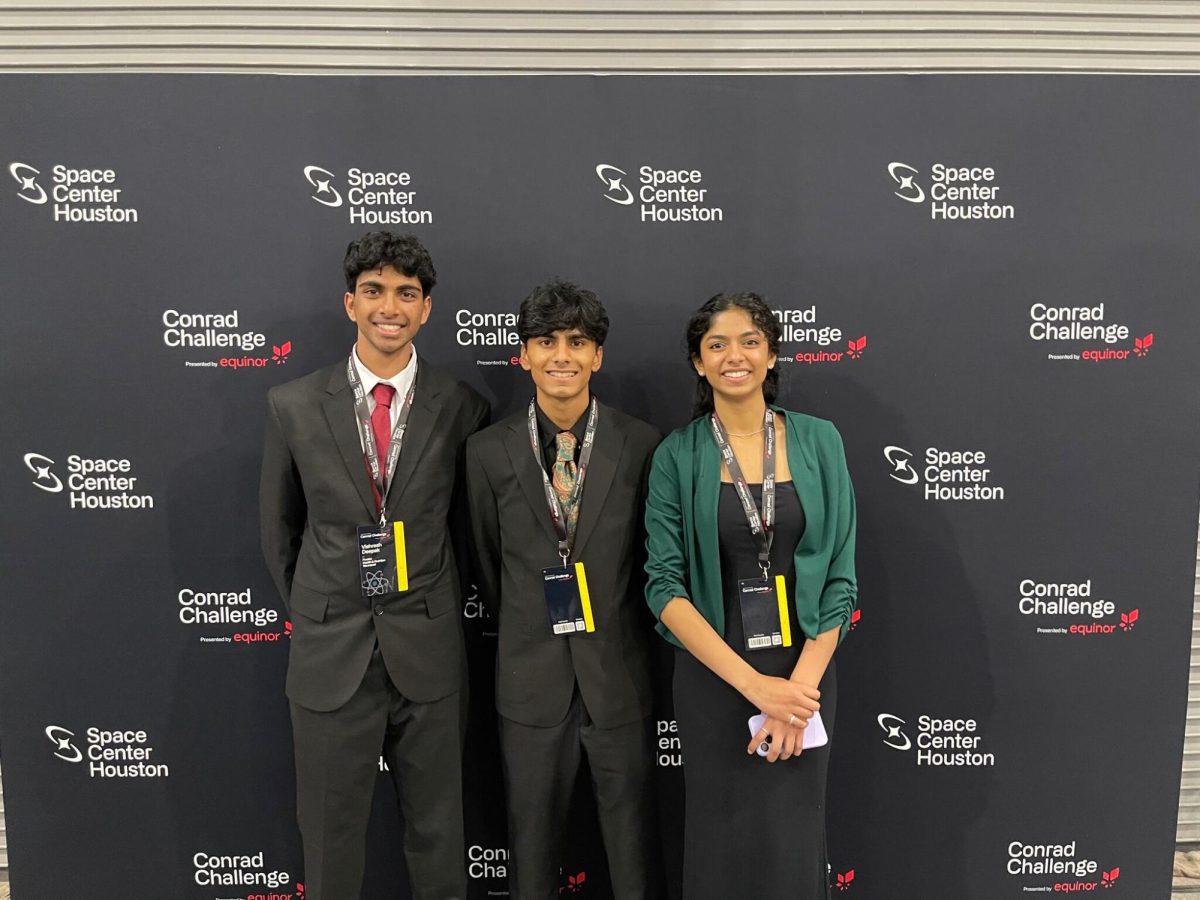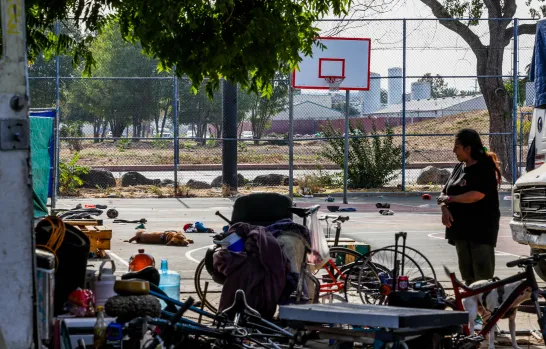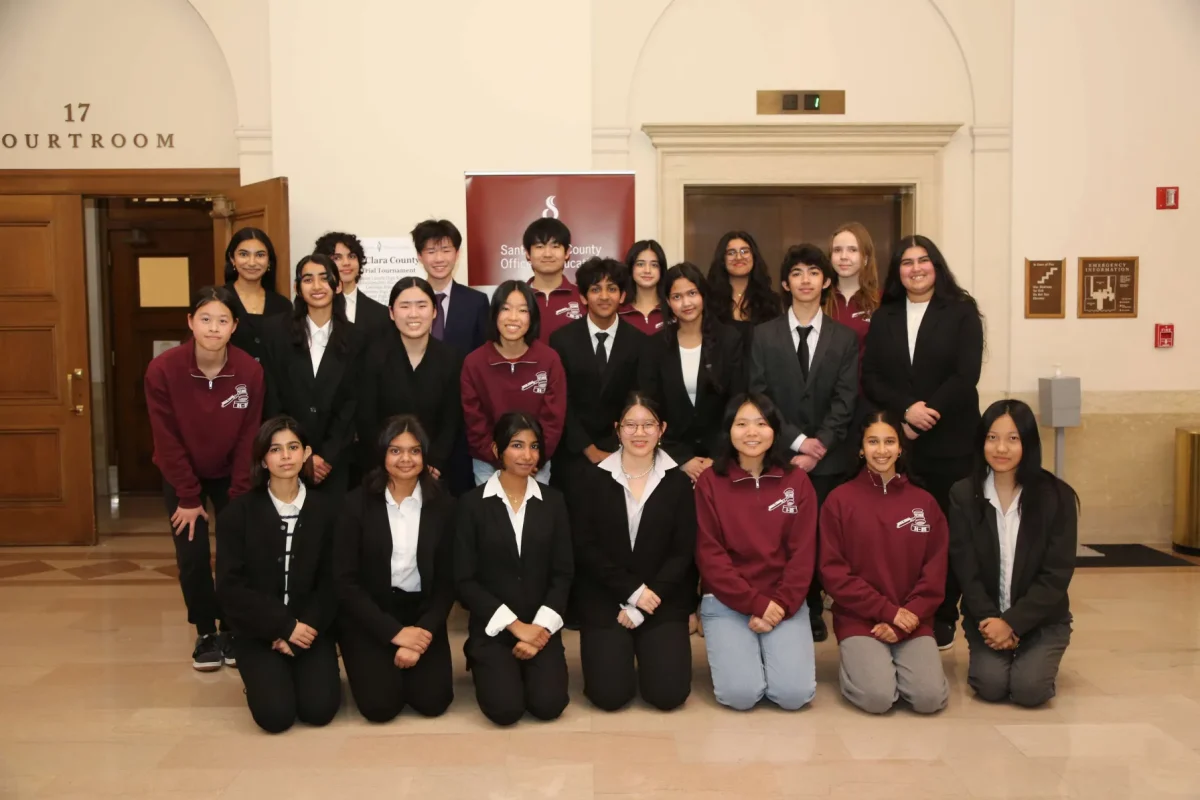It starts with a regular headache. Then the body stiffens. Within seconds, the person crumples to the ground, their muscles convulsing uncontrollably. No one knows when it will stop — or if it is already too late.
Epilepsy affects more than 60 million people worldwide. According to the Epilepsy Foundation, nearly 1 in 26 people in the United States will develop the condition at some point in their lives. About 30% of these cases are resistant to treatment, and many patients have no way of knowing when a seizure will strike next. The consequences — physical, emotional and financial — are often traumatic.
For Cupertino High School students Anika Mukherjee, Nikhil Krishnaswamy and Vishresh Deepak, that unpredictability was a call to action. Each has a family member impacted by the condition, and all shared a frustration with the limitations of current medical tools. They did not want to wait for the future of seizure prevention — they wanted to build it themselves.
Their solution? Neuropod, a compact, behind-the-ear electroencephalogram device that uses machine learning to detect early signs of seizures, giving users up to 30 minutes of warning before an episode begins. “Think of it like a heart rate monitor, but for your brain,” Krishnaswamy said.
Motivated by their desire to make a difference for those living with epilepsy, the team pushed through sleepless nights, failed prototypes and countless setbacks. Their hard work was finally validated when they won first place at the Conrad Challenge, an international science and entrepreneurship contest known for its fierce competition. Out of thousands of global applicants, only a handful of teams make it to the final stage, and even fewer walk away with the top prize.
“We wanted to see an actual change being made for [those suffering with epilepsy], because the current status quo that we see is just not effective enough,” Mukherjee said. “Electroencephalograms, they’re currently super bulky. You can’t really have the continuous monitoring that patients actually need.”
The team argued that monitoring one’s brain health should not require a hospital visit or cost thousands of dollars. They imagined a world where anyone could have access to healthcare technology at all times. But to reach that goal, they had to teach themselves electrical engineering, Bluetooth integration, circuit design and more — none of which were taught in their high school curricula. Despite that obstacle, what they lacked in expertise, they made up for in determination. Using online resources to teach themselves these new skills, they painstakingly built Neuropod completely from scratch.
“Our biggest challenges were working with the device itself, since it was something really new to us and [it was] a complicated device to build,” Deepak said.
Their responsibilities frequently overlapped but each member had their own area of expertise — Krishnaswamy developed the iOS app and contributed to the hardware, Mukherjee led the software and machine learning process and Deepak focused heavily on the hardware. But these roles weren’t rigid, as all members were passionate about being involved in every step of the journey.
Challenges arose everywhere, especially when it came to making the device portable and reliable enough to be worn on a daily basis. Their early prototype — built on an Arduino board, a programmable circuit — was a good starting point, but it failed to collect the data they needed for real analysis. Later iterations faced their own issues.
“One [challenge] in particular was battery management, since we were working with specific batteries and had to optimize the circuits to run without frying the batteries,” Deepak said. “We often found ourselves scrambling to find makeshift parts when we had battery issues.”
Despite these hurdles, they improved the device over time, turning a rudimentary prototype into a sleek accessory that can actively predict seizures.
“One thing that we learned for sure is that innovation is very iterative, and you’re never going to get something right on the first attempt,” Krishnaswamy said. “It was week after week after week of failed attempts to put together these parts. If you think about it, it’s like Lego pieces, but you don’t even have a manual on how they’re specifically supposed to go together.”
Mukherjee explained that she had to turn to every possible resource — including her dad, who had experience building circuits years ago, and her sister, a current computer engineering student at the University of Michigan. She also relied heavily on YouTube videos and online blogs.
“I think the biggest thing was getting a lot of encouragement from the people around us,” Mukherjee said. “Every time we would […] be discouraged by yet another failure or yet another device that didn’t work, we always had someone in the background telling us, ‘No, it’s a really cool project idea, you guys should continue with this.’”
While the Neuropod team had the technical side down, the Conrad Challenge required much more than just engineering skill. To succeed, they also had to present a strong business model and clearly communicate their project’s real-world impact. The competition was split into two parts: the Power Pitch, an eight-minute presentation, followed by a 20-minute Q&A session.
Mukherjee shared that shifting their mindset from treating the project like a typical science fair to presenting at an international competition, where they had to argue its real-world impact, was a major adjustment. Moving from a purely technical focus to one that emphasized entrepreneurship and narrative was one of their largest challenges.
Said Mukherjee, “‘How do we frame this in the right way? How do we say this in the right way?’ I remember the day before our pitch, we were all sitting in the same hotel room, rewriting parts of our speech, quite literally 12 hours before we were going to be up on stage speaking.”
The trio consistently practiced throughout flights, in hotel rooms and in the final hours before the pitch.
“The night before […] the presentation, we pulled an all-nighter trying to make our presentation as perfect as possible in the hotel room,” Deepak said. “Since we had already practiced what we were saying and knew our project in and out, we were ready for Expo the day after and felt good about our presentation.”
For four relentless hours, the three students stood their ground against questioning from industry leaders, judges and seasoned entrepreneurs. When the final awards ceremony arrived, all their late nights and months of effort finally paid off with recognition on an international stage.
“When they called the very first syllable, I jumped out of my seat,” Mukherjee said. “I remember that moment so well, because I remember I just couldn’t stop smiling.”
The Neuropod’s journey did not stop at Conrad. The team’s research placed second at the California Science and Engineering Fair and earned them the title of state winners in the Samsung Solve for Tomorrow competition, bringing in $12,000 worth of technology for CHS.
They have since filed for a patent, applied for multiple grants and are in the process of organizing clinical trials. These are the next steps to proving that Neuropod’s predictions are not just theoretical, but reliable enough for real-world use.
“It’s opened me up to the world of innovation and entrepreneurship,” Krishnaswamy said. “I didn’t know that there are so many different parts to creating an innovation that’s so much more beyond just the tech side of it.”
“Doing things for yourself is the best motivation,” Deepak said. “Not a competition or award that you’re going for, but something you want to do just for yourself and your life. […] Personally, I want to go into medicine, and this journey and project helped to inspire and further that interest and passion.”
In a world where grappling with epilepsy is common, Neuropod offers the gift of foresight. A chance to lie down instead of collapsing. A moment to calmly call for help, rather than cry out for it. An inkling of hope that with a few circuits, lines of code and relentless curiosity, three teenagers from Cupertino could stop the fall before it starts.











